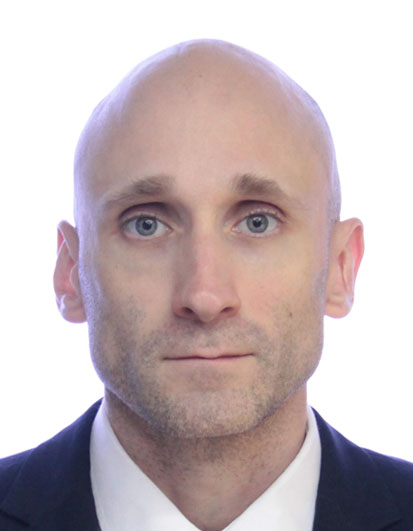
Research Interest
On the surface, it might seem like two unrelated corners of physics. Still, in recent research, my colleagues and I have discovered a remarkable connection between two fundamental phenomena: the radiation emitted by an accelerated electron and thermal equilibrium emission. This discovery employs two classical branches of physics: electrodynamics and thermodynamics.
In electrodynamics, we've long understood essential aspects of the radiation created by a moving charged particle, like an electron, as it accelerates. This effect has been a cornerstone of our understanding of electromagnetic radiation. On the other hand, in thermodynamics, we often encounter Planck's law, which describes thermal spectra. These two phenomena appeared separate and distinct for over a century.
Until now, no one has successfully derived thermal radiation from an accelerating electron. However, our recent findings bridge this gap by presenting, for the first time, an accelerating electron emitting an exact Planck distribution.
This result has relatively far-reaching implications and advances the understanding of the fundamental principles governing acceleration, temperature, and radiation. For example, we predicted that an electron will emit thermal radiation during beta decay. Precision measurement of the radiative beta decay of the free neutron from the RDK II experiment, published in Nature and Physical Review Letters, has recently confirmed this prediction; i.e. the color of the photons emitted by the accelerating electron obey a one-dimensional Planck spectrum.
Prof. Good leads the Good Research Group (GRG) in Astana, Kazakhstan. The program is an acceleration radiation research collaboration, grant-funded in part by Nazarbayev University via an ongoing international review from the USA-based Oak Ridge Associated Universities system. Support is also found via the U.S. Department of Energy, the Julian Schwinger Foundation, and the Kazakhstan Ministry of Education and Science.
The Collaboration is part of the Energetic Cosmos Laboratory (ECL) and the Leung Center for Cosmology and Particle Astrophysics (LeCosPA). The ECL is spear-headed by eminent scientist Eric Linder (Head of Theory-fmr.) and Physics Nobel Laureate George Smoot (Director). LeCosPA is part of the National Taiwan University in Taipei, directed by Pisin Chen (NTU Chee-Chun Leung Chair Professor of Cosmology).

Prof. Good received the B.Sc. in Physics with the Highest Honors from the Georgia Institute of Technology, USA, under the advisement of Prof. David R. Finkelstein (Ph.D., MIT, whose coordinates removed the singularity in the Schwarzschild metric convincing the physics community of the physical existence of black holes). Prof. Good then attended the University of Hawaii as a Manoa Scholar in the Physics and Astronomy Department and the Institute for Astronomy.
Prof. Good obtained the M.Sc. and Ph.D. in Physics from the University of North Carolina at Chapel Hill (where Peter Higgs wrote his paper on the Higgs boson-2013 Nobel Prize; see also.). He was advised by Prof. Charles R. Evans (Caltech post-doc under Kip Thorne, 2017 Nobel Prize); and Prof. Paul R. Anderson (PhD, UCSB under James Hartle of the Hartle-Hawking wavefunction of the universe). As an MSc student, Prof. Good took General Relativity at Duke University from Prof. Ronen Plesser (PhD Harvard). As a graduate student, Good was a visiting researcher at the Department of Applied Mathematics and Theoretical Physics at Cambridge University in 2009.
From 2011 to 2014, he was a Postdoctoral Scientist and Senior Research Fellow in Singapore at the Institute of Advanced Studies at the Nanyang Technological University in the quantum cosmology research group. Here, he helped discover black hole quantum vortices and did pioneering work in relativistic superfluidity with MIT Prof. Kerson Huang (who authored the widely used graduate textbook Statistical Mechanics).
In August 2014, he first joined Nazarbayev University as an Assistant Professor. He has authored over 60 papers in high-impact, peer-reviewed international journals such as the Journal of High Energy Physics, Classical and Quantum Gravity, and Physical Review D. He has won awards from the American Association of Physics Teachers, the National Science Foundation, NASA, Raytheon, the American Physical Society, MIT, and the Julian Schwinger Foundation. He was awarded the Outstanding Teaching Award from the University of North Carolina and the University-level Teaching Award from Nazarbayev University.

***
A Recent Timeline:
2020: My work with MIT physicist Prof. Frank Wilczek (2004 Nobel Laureate) and Eminent Scientist Eric Linder (UC-Berkeley) solved the information loss problem in the moving mirror models for black hole radiation, a nearly 50-year-old puzzle on black holes put forth by Stephen Hawking. Information escapes on quasi-thermal radiation.
2021: My work with Prof. Pisin Chen (2023 Alfven Prize) led to the discovery of a quantum analog for Larmor power.
2022: My work with Prof. Paul C.W. Davies (1995 Templeton Laureate) discovered crucial hints of thermal radiation from an accelerating electron.
2023: My work with Evgenii Ievlev (U. of Minnesota) theoretically confirmed the thermal radiation.
The temperature is constant,

where r is the radial distance of the electron from the origin, and t”(r) is the second derivative of time with respect to the radial distance.
2024: My work with Evgenii Ievlev and Morgan Lynch (Max Planck Institute for Nuclear Physics) has experimentally confirmed the 1D Planck spectrum from an accelerating electron:
where s is the final speed of the electron. One notable simple expression is the relationship between the maximum energy available to the electron and the temperature:

Complete list of publications: Google Scholar, Inspire
- Good, M.R.R., Eric V. Linder, and Frank Wilczek “Moving mirror for quasi-thermal radiation fields”,
-
- Physical Review D (2020).
- An exact solution to the moving mirror information loss problem: 1909.01129
- Frank Wilczek is the 2004 Nobel Laureate.
- Good, M.R.R., and Paul C.W. Davies “Infrared acceleration radiation”,
-
- Foundations of Physics (2023).
- First solution for the temperature of the accelerating electron: 2206.07291.
- Paul Davies is the 1995 Templeton Laureate.
- Lynch, M., Ievlev, E. and M.R.R. Good “Observation of 1D Planck radiation”,
-
- Progress in Theoretical and Experimental Physics (2024).
- The first experimental confirmation of the temperature of an accelerating electron: 2211.14774
- First demonstration of the predictive power of the exact holography between a mirror in 1+1 dimensions and an electron in 3+1 dimensions.
Quantum Mechanics
Statistical Mechanics
Classical Mechanics
Classical Electrodynamics
Condensed Matter Physics
Advanced Mathematical Methods
Thermodynamics and Statistical Physics
General Relativity
Astronomy




